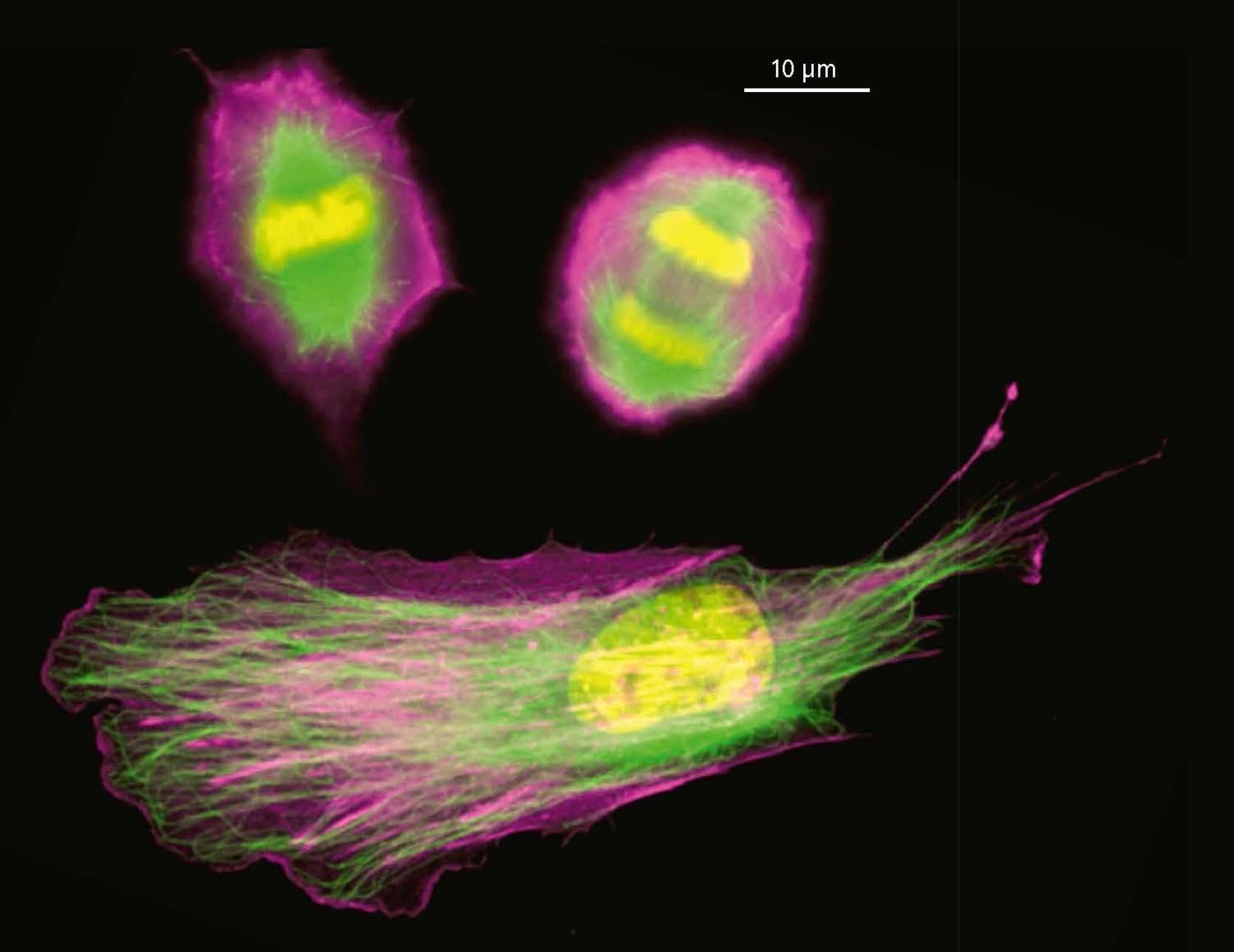
Muscle cells are long and slender, while the cells lining our guts are tightly packed columnar shapes. Importantly, macrophage cells of our immune systems move through gaps between other cells and tissues, removing pathogens and debris. Neurones, starting out as small spheres, grow long thin projections that can be extensively branched. Indeed, the longest neurones in our body are about 1 metre in length, but less than one micrometre in diameter. So how do cells control and change their shape?
The key component enabling cells to change or maintain their shape is the cytoskeleton. This consists of filaments that are assembled from repeating protein subunits. The stiffest filaments are microtubules made of a ring of 13 strands of tubulin dimers assembled head-to-tail. Microtubules are best known for forming the spindle in mitosis, but they also resist compressive forces on cells and, like the bones in our bodies, provide structural support. Microfilaments, which are made from two twisted strands of actin polymers, are also important for determining cell shape (see Figure 1). These form a mesh-like rim just beneath the cell-surface membrane of most cells. In neurones, actin filaments form equally spaced rings that maintain the small diameter of the axon, while bundles of stiff microtubules run along the length of neuronal processes. The actin rings are spaced by another cytoskeleton protein, spectrin (see Figure 2).
Your organisation does not have access to this article.
Sign up today to give your students the edge they need to achieve their best grades with subject expertise
Subscribe




